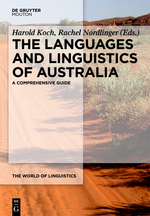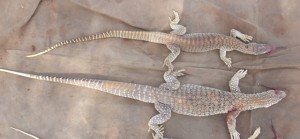Payi Linda Ford will deliver the Alfred Hook Lecture at 5pm on Wednesday 11 May 2016 at the Charles Perkins Centre Lecture Theatre, Building D17, Johns Hopkins Drive (off Missenden Road), The University of Sydney NSW 2006
Endangered Languages
MLIP recap July 2015: Language in education in multilingual contexts: beyond ‘mother tongue’ education
A recap of last night’s Melbourne Linguistics in the Pub, by Kellen Parker van Dam (La Trobe University).
The topic of MLIP was ‘Language in education in multilingual contexts: beyond ‘mother tongue’ education’ and the discussion was led by Felix Ameka (Leiden University).
Topic and description as posed by Felix Ameka in the original MLIP announcement:
Linguists promote the benefits of “mother-tongue” education, especially in the first years of primary education. Linguistic human rights advocates argue that if a child is not taught in their first language, then the child’s basic linguistic human rights are violated (e.g. Babaci-Wilhite 2014). However the notion of the ‘mother tongue’ is inappropriate in highly multilingual contexts (see e.g. Lüpke and Storch 2013). In these contexts, children can be disadvantaged by ‘mother tongue’ policies in education that favour the use of a single standardised language in education. I will discuss the case of Ewe-speaking children in Sokode, Ghana who use a colloquial Central Ewe variety at home and struggle with the standard Ewe used in the school. I advocate a multi-lectal, multilingual, multi-modal approach to language in education that eschews an opposition between so called exoglossic national languages and local indigenous languages.
Dry-dock launch of ‘Kochlinger’

On Thursday I had a most pleasurable time launching a new book on Australian languages and linguistics at the terrific annual conference of the Australian Linguistics Society in Newcastle (thanks Newcastle organisers!). Here goes for ALS’s first ever dry-dock launch… for Harold Koch and Rachel Nordlinger’s co-edited book (2014) The languages and linguistics of Australia: a comprehensive guide.
Australia has a long and interesting history of developing new kinds of books about language areas. In the nineteenth century we had compendia of vocabularies across Australia or parts – by Edward Curr (Curr, 1887), George Taplin (Taplin, 1879) and Robert Brough-Smyth (Smyth, 1876). This was followed in the early twentieth century by Wilhelm Schmidt’s pan-Australia classificatory work (Schmidt, 1919), and later Arthur Capell’s new approach to Australian linguistics (Capell, 1956). Then Norman Tindale produced his map and bibliography in 1974 (Tindale, 1974). In 1976 Dixon edited a collection of papers by lots of different linguists addressing the same grammatical topics (Robert M.W. Dixon, 1976). A flurry of different types of books appeared in the 1980s—from R M W Dixon and Barry Blake’s editing of short grammar handbook series (e.g. Dixon and Blake, 1983), the handbook series for geographic areas with vocabularies and bibliographies which Jim Wafer initiated (e.g. Menning and Nash, 1981). Then there were overview books (Blake, 1987; Dixon, 1980; Yallop, 1982). In 1993 Michael Walsh and Colin Yallop produced their edited collection of chapters on different topics in Indigenous languages (Walsh and Yallop, 1993). That book became the mainstay of courses on Aboriginal languages and was affectionately known as ‘Wallop’.
Issues in the documentation of newer language varieties
Jonathan Schlossberg recaps last week’s Linguistics in the Pub, a monthly informal gathering of linguists in Melbourne to discuss topical areas in our field.
Linguistics in the Pub on Wednesday 29th of October, 2014 centred around the theme: Issues in the documentation of newer varieties. Felicity Meakins (University of Queensland) led the discussion. The announcement and short background reading are here.
This session marked the 5th anniversary of Linguistics in the Pub. Organiser Ruth Singer would like to extend a thank you very much to all participants, including ‘retired’ co-organiser Lauren Gawne. Lauren’s gap has been partly filled by the Monash PhD students coalition: Harriet Shepard, Jonathon Lum, Alan Ray and Jonathan Schlossberg (University of Newcastle) will be co-organising when they are not in the field. Interstate/international visitors – don’t forget let me know when you’re coming to Melbourne so we can have you along too!
Myfany Turpin on Sand goannas in central Australian languages –
From Myfany Turpin
The names for ‘sand goanna’ (Varanus gouldii) in the languages of areas where they are found often correspond to two ethnospecies. Photographed here are the small arlewatyerre and the large aremaye, both from near Barrow Creek, NT, as they are called in Arandic languages (Arrernte, Kaytetye, Anmatyerr and Alyawarr). On this day my companions successfully hunted both in close proximity, so I thought I’d see if there were differences in the scientific taxonomy that could improve my translations of ‘small sand goanna’ and ‘large sand goanna’ respectively.
Human rights, language rights and the Northern Territory Government
Rumour has it that the Northern Territory Government is proposing to scrap the one remaining linguist position in the southern part of the Northern Territory. This position has been going since the mid 1970s, and the occupants have worked with Indigenous people and schools to create shared understandings of Indigenous languages, of the needs of school-children for understanding what happens in the classroom, of the needs of Indigenous teachers for support and training. They have produced amazing materials in Indigenous languages for classrooms, curriculum materials and reference documentation, some of which is archived and available in the Living Archive of Aboriginal Languages.
Rumour also has it that the reason for scrapping the position is because there is “no need for any linguistic expertise in Central Australia and the Barkly schools”.
But rumour doesn’t have it that the kids have all staged a revolution and started speaking Standard English.
Sharing the load? Problems with the ‘lone depositor’ model for the archiving of materials in endangered language archives
Ruth Singer recaps last week’s Linguistics in the Pub, a monthly informal gathering of linguists in Melbourne to discuss topical areas in our field.
Traditionally collections in endangered languages archives are identified with a single depositor. This depositor is typically a researcher, who is not a member of the community in which the recordings were made. This depositor decides on access restrictions to the materials, ideally in consultation with the community. There are a number of quite separate problems with this position, for those who manage archives and for those who find themselves in the position of lone depositor. In this era of collaborative fieldwork, we can also ask whether the lone depositor model is the best one for communities who speak endangered languages. One suggestion is to make collections open access so that the depositor does not need to be contacted. Another suggestion is to name a number of depositors for each collection, so that no single person has sole responsibility. In this LIP we will discuss potential solutions to the problems of the lone depositor model in the light of participants experiences as depositors and archivists.
What flows from ngaka-rna : how naming books spread a Dieri word
Coining a new name from a word taken from an Australian language often has complex implications, even if the naming agency is oblivious to them. When the name is for a place, a suburb or a street or a park, the official approval involves the relevant local government body. Two writers went into some of the issues a few years ago:
- Tony Birch (2010 [1992]) sees the application of indigenous names to ‘houses, streets, suburbs and whole cities’ as ‘an exercise in cultural appropriation’. He draws a distinction between the restoration of indigenous placenames (such as Gariwerd ~ Grampians in western Victoria), and the fresh application to the built environment of a word imported from some Australian language.
- Sam Furphy (2002)
earlierdiscussed the role of what he dubbed ‘naming books’: popular twentieth century booklets of lists of ‘Aboriginal words’ such as Endacott (1923), Thorpe (1927), Kenyon (1930), Cooper (1952), which, for all the expressed good intentions of their compilers, have contributed to a homogenised perception of Australian languages: ‘The earliest popular naming books … make virtually no reference to the variety of languages spoken by the indigenous people of Australia, such that an uninformed reader could be forgiven for believing that there was only one Aboriginal language.’ (Furphy 2002:62) ‘Naming books simplify and romanticise Aboriginal words and remove them from their cultural and linguistic context.’ (Furphy 2002:68)
I’ve recently come upon an example which illustrates a combination of both concerns: one where official placenaming has drawn on the notorious naming booklets.
Language documentation index
The map below is built on information produced by a group of linguists working in Vanuatu. It is a sample documentation index that provides a visualisation of what is known about each language. Note that this is not a language vitality index of the kind outlined in Harmon and Loh (2010). Leaving aside thorny questions of what constitutes a language and language name (see Good and Cysouw 2013) and choosing to use a given set of language names (that is not limited to ISO-639-3), this exercise produced a map of the languages of Vanuatu, with each language assigned an index number on a 21 point scale assigning 1-5 points for each of four categories: Grammar; Lexicon; Texts; Media corpus. The icons are colour-coded (white = 0; red = 1-5; purple = 6-10; yellow = 11-15; green =16-20). 54 languages in this list have a zero rating, indicating that virtually nothing is known about those languages.
Open access and intimate fieldwork
A report on the Linguistics in the Pub discussion Tuesday 11th March, Prince Alfred Hotel, Grattan St, Melbourne.
This Linguistics in the Pub discussion brought together fieldworkers who do research in Indigenous Australia, Africa, South Asia, Papua New Guinea and Nepal, as well as a computational linguist who has developed software to automate language documentation. The linguists were not all Australian, in fact we were lucky to have four participants who identify as European who are living in Australia, temporarily or permanently. The linguists’ experience in language documentation ranged from between 6-30 years and between them had deposited in the digital archives: DoBeS, Paradisec and ELAR. The timeliness of this discussion is demonstrated by David Nathan’s very recent ELAC post on the same topic.
 Follow
Follow